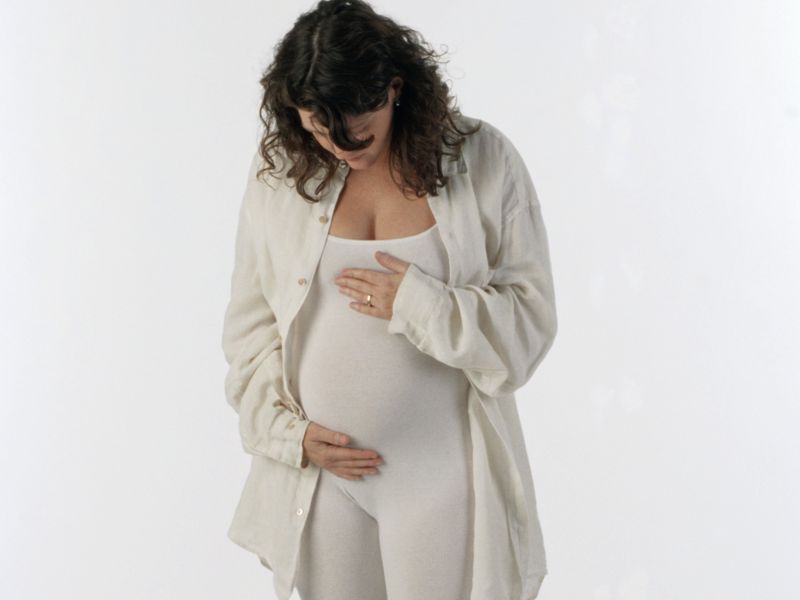FRIDAY, Sept. 29, 2017 (HealthDay News) — You may have heard that some new mothers choose to eat their own placenta after childbirth. But there’s no indication the trendy practice offers any health benefits, and some evidence it could prove dangerous, new research suggests.
After reviewing dozens of studies from across the globe on so-called placentophagy, or placenta consumption, the researchers say they’re advising obstetricians to discourage their patients from eating the placenta in any form.
“As obstetricians, it’s important to tell the truth. And the truth is it’s potentially harmful and no evidence it’s beneficial, so therefore, don’t do it,” said study author Dr. Amos Grunebaum. He’s an obstetrician/gynecologist at New York-Presbyterian/Weill Cornell Medical Center in New York City.
“Over the last few years, we’ve had an increasing demand from patients who wanted to take their placenta home after delivery in order to eat it,” Grunebaum added. “We’ve also had many obstetricians ask us how to respond to this request.”
Many animals are known to consume their placenta after giving birth, but until relatively recently, humans’ so-called “afterbirth” was routinely discarded.
The placenta is an organ serving as the connection between mother and developing baby. The placenta’s job is to transport oxygen and other crucial nutrients for fetal growth, as well as filter toxins that might harm the fetus, according to the researchers.
The first mention in literature of humans eating their own placentas occurred about a century ago, Grunebaum said, but the more recent fascination with the practice has been fueled by celebrity endorsements, among other factors.
“Patients told us their doulas [non-medical birth support professionals] told them it was common to eat the placenta in other cultures,” he said. “But we only found one culture where eating the placenta has become more ‘fashionable,’ and that’s upper-class women in the United States.”
Human placentas have been consumed in many forms: raw, cooked, roasted, dehydrated, steamed and dehydrated in capsule form, or in smoothies or other drinks. The most common preparation appears to be in capsules, the new report noted.
Numerous companies offer to prepare the placenta for consumption, typically at a cost of $200 to $400, the study authors said.
But Grunebaum’s research found no evidence in clinical studies backing the health benefits claimed by proponents of placenta-eating. These alleged advantages include preventing postpartum depression, enhancing general mood and energy levels, improving breast-milk supply and reducing postpartum bleeding.
On the other hand, potential dangers of placenta consumption are becoming apparent. In June, the U.S. Centers for Disease Control and Prevention issued a warning about a case of a newborn developing recurrent group B Streptococcus sepsis after the mother ingested contaminated placenta capsules containing this form of Streptococcus.
The baby’s mother had been consuming placenta capsules three times a day. While her breast milk did not exhibit group B Streptococcus, samples of her dried placenta inside the capsules did. It was the first “solid evidence that contaminated placenta capsules can be a source of infection,” Grunebaum’s study said.
The CDC went on to recommend avoiding placenta capsule consumption due to inadequate eradication of infectious substances. Inadequate heating and preparation of the placenta may also be insufficient to eradicate viruses such as HIV, hepatitis or Zika, according to the study authors.
A woman’s decision about placenta-eating “should be based on scientific information, not on wishful thinking and other thoughts that are not clearly outlined,” Grunebaum said. “Ethics is among the most important subjects in medicine. We need to be able to tell our patients what’s right and what’s wrong … and be ready with a response based on science.”
Most U.S. states still lack clear regulations or safety guidelines addressing placenta consumption, the study authors said. Hospitals have their own widely varying policies regarding the release of the placenta to mothers.
Dr. Matthew Hoffman is chair of obstetrics and gynecology at Christiana Care Health System in Wilmington, Del. He called the new research “both timely and useful,” since his hospital is also fielding more requests by new mothers to release their placentas for consumption.
“This is very helpful to guide us from a policy standpoint,” said Hoffman, who wasn’t involved in the study.
“Our challenge is, we see a variety of responses from both our physician and nursing colleagues and our midwives. We have folks who act with revulsion and decline the request, and other folks who are boxing it up with a bow for them,” he added. “We don’t, as a specialty, have an informed view of what to do.”
Christiana Care officials are in the midst of discussing their policy on the matter, Hoffman said, and the new study will help.
According to the new research, a recently conducted survey on placenta consumption reported that nearly 54 percent of obstetricians and gynecologists felt uninformed about the risks and benefits of the practice, and 60 percent were unsure whether they should be in favor of it.
“What this [the new study] really helps us to do is say to patients, there are some concrete risks, and a lot of the touted benefits may not necessarily be true based on science, and help them make the best decision for them,” Hoffman said.
The study was published online recently in the American Journal of Obstetrics and Gynecology.
More information
The American Pregnancy Association has more on the function of the placenta.
Copyright © 2025 HealthDay. All rights reserved.

